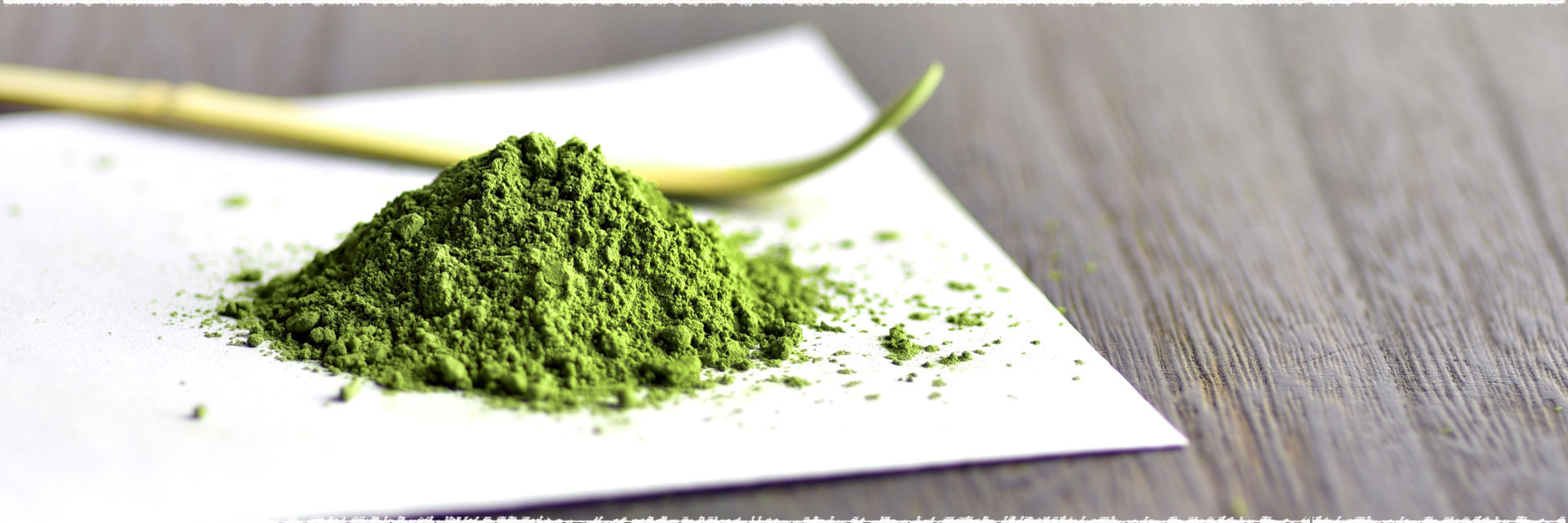Overview of Matcha Tea
Matcha tea, also named green tea powder, has lasted over a thousand years. Matcha originated from the Sui Dynasty, rose in the Tang Dynasty, peaked in the Song Dynasty. Lu Tong, a poet in the Tang Dynasty, praised for Matcha tea in a poem “green cloud interests wind blowing constantly, white flowers floating in the bowl” to describe the shape and color of the Matcha green tea bubble.
By far, Matcha green tea is the most fresh and nutritious tea, due to its natural bright green color, which can also enhance consumer desire to drink. The nutrition of a cup of Matcha tea is higher than 30 cups of ordinary tea.
The Nutritional Content of Matcha Tea
Matcha is rich of nutrients and trace elements that are essential for body needs. The main components of Matcha are tea polyphenols, caffeine, free amino acids, chlorophyll, protein, aromatic substances, cellulose, vitamin C, A, B1, B2, B3, B5, B6, E, K, etc. and almost 30 kinds of trace elements like potassium, calcium, magnesium, iron, sodium, zinc, selenium, fluoride.
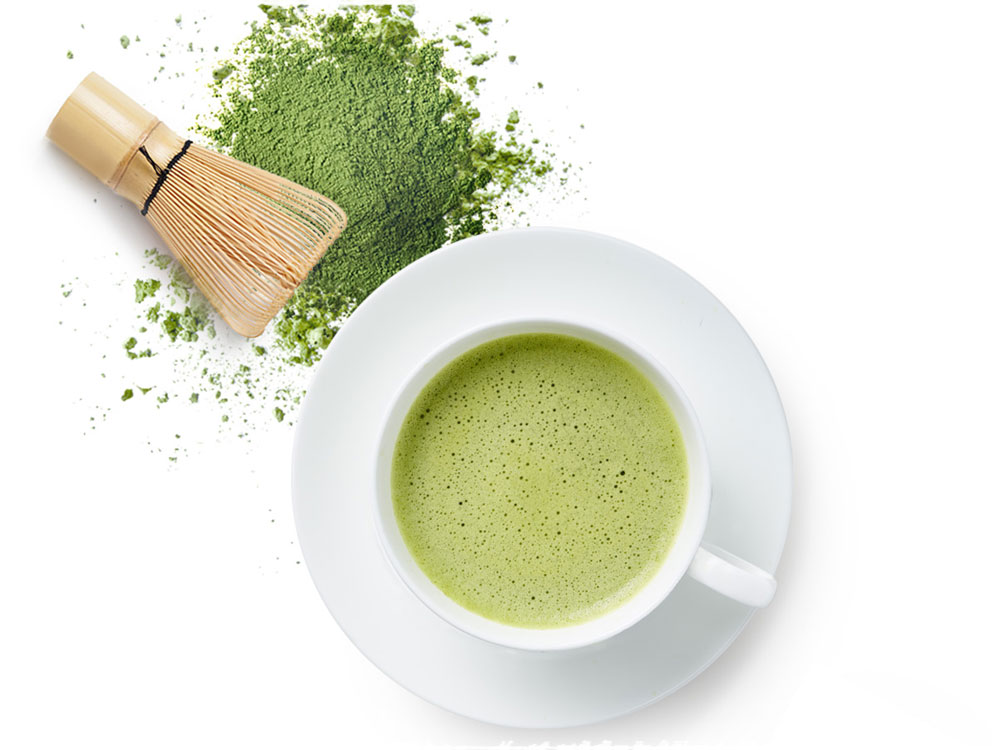
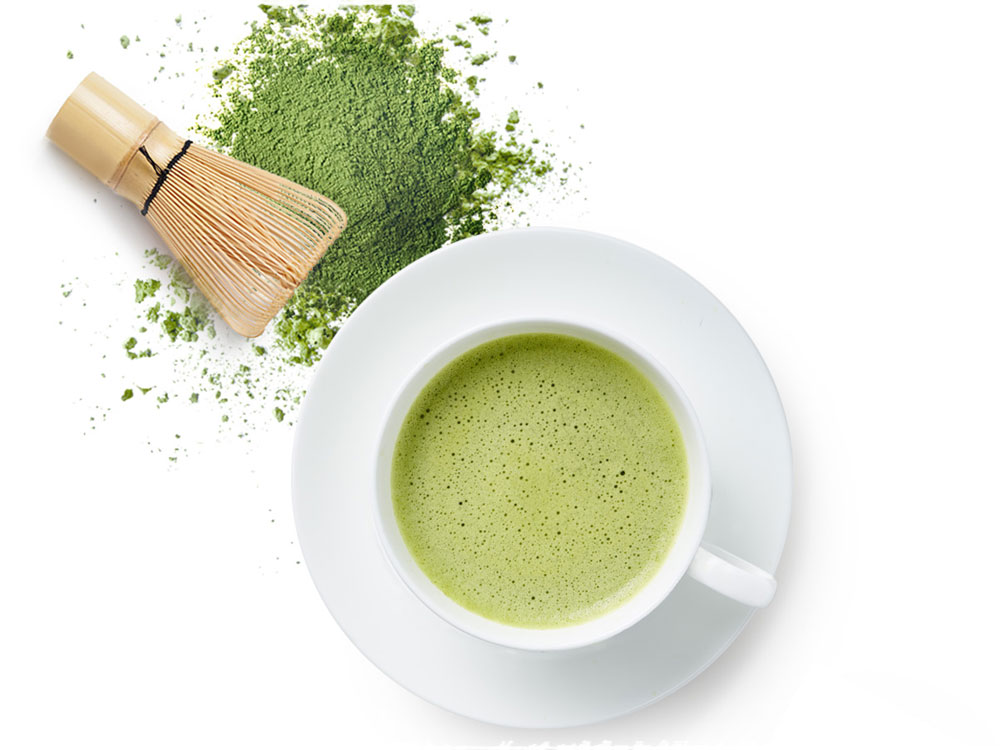
The nutritional content of Matcha (100g):
Protein: 6.64g (nutrient for the formation of muscle and skeleton)
Sugar: 23.67g (energy to maintain vitality)
Food fiber: 55.08g (helping excrete harmful substances in the body, preventing constipation and sickness linking with lifestyle)
Fat: 2.94g (energy source for activity)
B tea polyphenol: 12090μg (closely relating to eye’s beauty and health)
Vitamin A: 2016μg (Beauty for Skin)
Vitamin B: 1 0.2mg (energy metabolism, energy source for brain and nerve)
Vitamin B2: 1.5mg (promoting cell regeneration)
Vitamin C: 30mg (an indispensable component for the formation of collagen, connecting to skin health, whitening, etc)
Vitamin K: 1350μg (helping aggregating bone calcium, preventing Osteoporosis, balancing blood)
Vitamin E: 19mg (anti-oxidation, preventing aging, known as a vitamin for rejuvenation)
Folic acid: 119μg (preventing the abnormal replication of cells, inhibiting the growth of cancer cells, an indispensable nutrition for pregnant women)
Pantothenic acid: 0.9mg (maintaining the health of the skin and mucous membranes)
Calcium: 840mg (preventing osteoporosis)
Iron: 18mg (blood production and maintenance, should be ingested as much as possible especially for women)
Sodium: 8.32mg (maintaining the balance of blood fluids in medial and lateral cells)
Potassium: 727mg (maintaining the normal work of nerves and muscles, removing excess salt in the body)
Magnesium: 145mg (lacking of magnesium will lead to circulatory disorders)
Sub-lead: 1.5mg (maintenance for skin and hair health)
SOD activity: 1260000unit (antioxidant, preventing cell oxidation = preventing aging)
Matcha Health Benefits
1. Making eyes bright:
Matcha has rich vitamin A, a visual sensitizer, which means “making eyes bright”.
2. Anti-caries:
Fluoride, as one of the trace elements required by the body, affects the health of bone and teeth. Matcha tea is a natural beverage with much fluorine.
3. Diuretic and anti-stone:
As ingredients in Matcha tea, caffeine and palmitate can inhibit the reabsorption of renal tubules, so it’s a perfect diuresis. Macha can smooth urine, strengthen the kidney function to make the kidney endotoxin and waste outside the body as soon as possible, as well as preventing kidney diseases and stones.
4. Weight Loss:
EGCG, found in high concentrations in Matcha, has been shown to increase the rate of burning stored fat as energy, as well as decreasing the formation of new fat cells. Other studies have shown that the catechins in Matcha increase the body’s rate of calorie burning each day and offered additional fat burning benefit during exercise.


How to Make Matcha Tea for Weight Loss
I. Matcha powder + Yogurt
Practice: a tablespoon of green tea powder added to 200 ml low-fat yogurt or Yakult.
Efficacy: In this way, a cup of “Matcha yogurt” for weight loss, body sculpting, and skin beauty is made. This product is not only taste sweet and sour, but also rich-nutrient, low-fat and low- heat. Taking 1~2 hours before meals will help loss weight, even though meals- in normally. But we suggest using Matcha tea yogurt to replace lunch or dinner, which can improve the effect. In Matcha green tea, the aromatic compounds can dissolve fat to prevent fat accumulation, at the same time, vitamin B1, vitamin C and theophylline promote gastric secretion for digestion and fat burner. Lactic acid bacteria converse lactose in milk. So it makes the body absorb easily, benefits to breed intestinal beneficial bacteria, and supplements the daily needs of the human body with rich calcium. Drinking it before meals makes the stomach feel satiety. Thus dieting effect can be achieved naturally and nutritional balance can be made.
II. Matcha + Barley Flour
Recipe: Matcha powder, barley flour
Practice: First put the green tea powder into the bowl, second add some barley flour (brown rice flour, soybean), third add cream and stir evenly, last brew with hot water.
Efficacy: beauty, tender skin, diuresis, fat burner.
III. Matcha + Lotus Leaf Tea
Recipe: Matcha tea powder 2 grams, lotus leaf 3 grams
Practice: directly brew them together with boiling water.
Efficacy: especially benefit for people who is parched, grow acne easily, looked pale, have relaxed facial skin and people who are weak or fat.
IV. Matcha + Hawthorn
Recipe: Matcha tea powder 6 grams, hawthorn 16 grams
Practice: Add three bowls of water to boil them for 6 minutes. It should be drunk after meals.
Efficacy: It can effectively eliminate fat oil and disperse blood stasis.
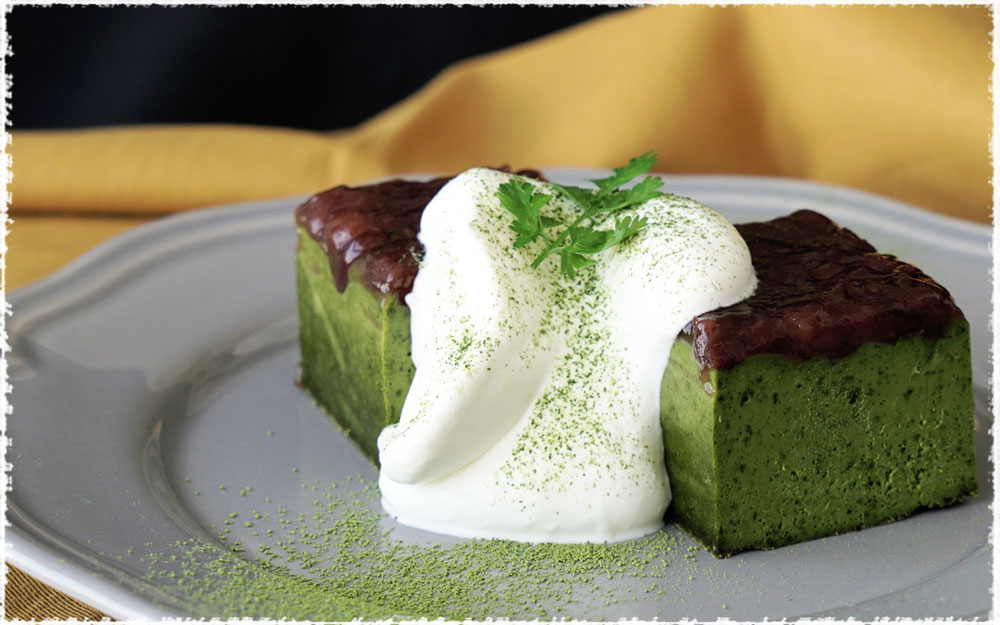
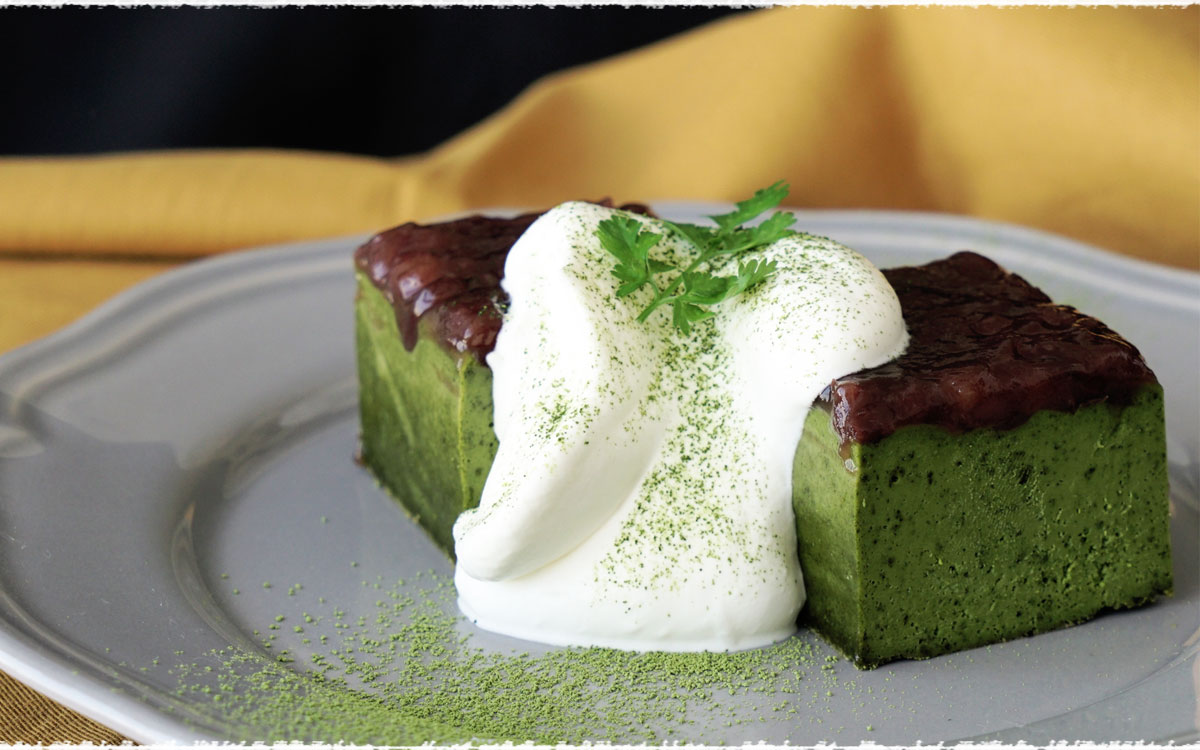
Edible Methods of Matcha Tea
I. Original Flavor Matcha
Firstly wash the bowl or glass, then pour into a flat spoon of Matcha tea and rush into warm water about 150 ml (60 degrees can be). Secondly smash Matcha tea with the Matcha tea brush. Finally you can taste the original flavor Warm Matcha tea.
II. Honey Matcha tea
First put a spoonful of Matcha tea into a bowl or glass, pour into 150ml warm water, open the tea with tea brush, and then add into a little honey according to your own flavor. A cup of “honey Matcha tea” with both tea and honey flavor is finished after stirring! You can also join ice according to your own preference to make “ice honey Matcha tea”!
III. Matcha Sweet Cake
Recipe: Matcha tea 4 grams, rice flour 100 grams, white granulated sugar 100 grams, refined oil a little
Practice: 1. Smear salad oil on the square container.
2. Put Matcha into the bowl, add white granulated sugar and a little hot water, smash Matcha tea with the tea brush.
3. Pour rice flour into a bowl, stirred evenly into a thin paste shape with chopsticks, then pour it into a container, covered with plastic wrap, place into the microwave oven about 5 minutes, bake and cool.
4. Set the uncovered Matcha sweet cake on the cutting board and cut it into rectangles then you can enjoy it.
IV. Vitality Matcha tea
Recipe: Matcha 2 tsp, lemon 1/2, lactic acid bacteria 1 bottle, honey in right amount
Practice: 1 Peel and slice lemon, then press it into juice.
2 Pour and mix lactic acid bacteria milk, lemon juice with Matcha tea powder.
3 Add honey according to your own preference and then drink it immediately.
Efficacy: Matcha tea contains tea polyphenols, vitamin E and C, which can activate cells and keep beauty.
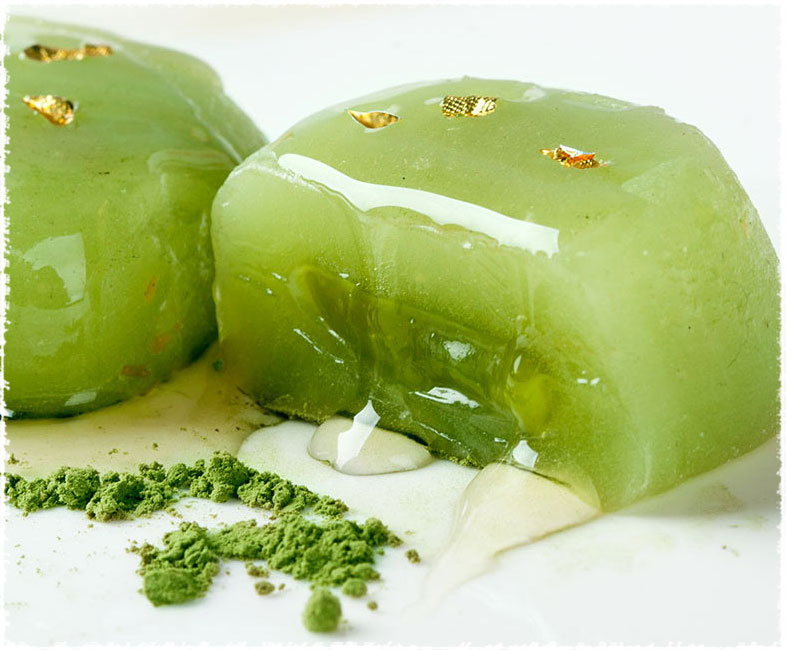
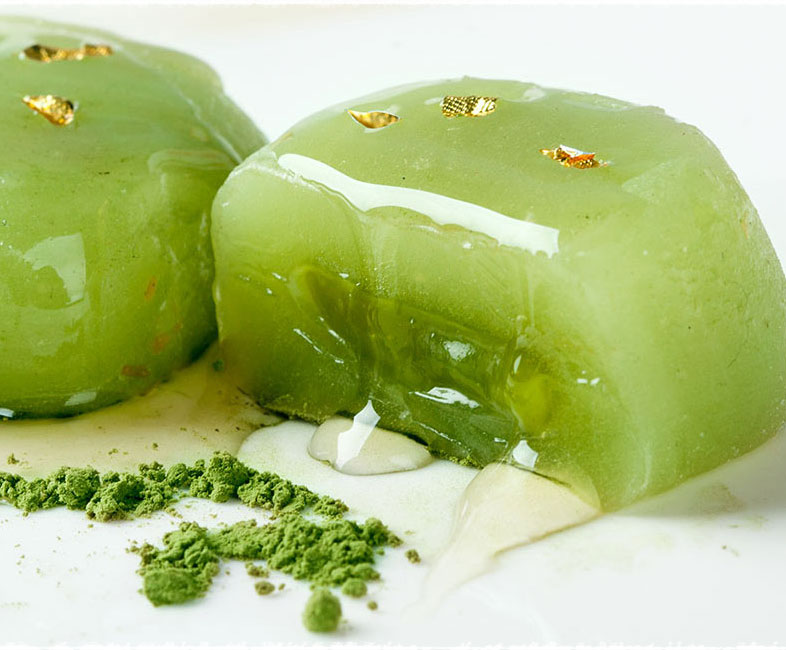
Other uses of Matcha tea
Matcha mask:
Homemade masks made by Matcha tea with rich vitamin C can achieve skin-whitening effect. Compared with lemon which also full of vitamin C, Matcha will not stimulate the skin to cause inflammation because of no-acid. In addition, Matcha contains tannic acid ingredients which can shrink the skin, and work as beauty moisturizer. Besides skin-whitening, Matcha also acts as sterilization, so the Matcha tea mask has suppurative effect on acnes. After applying a mask, the skin feels smooth when been touched.
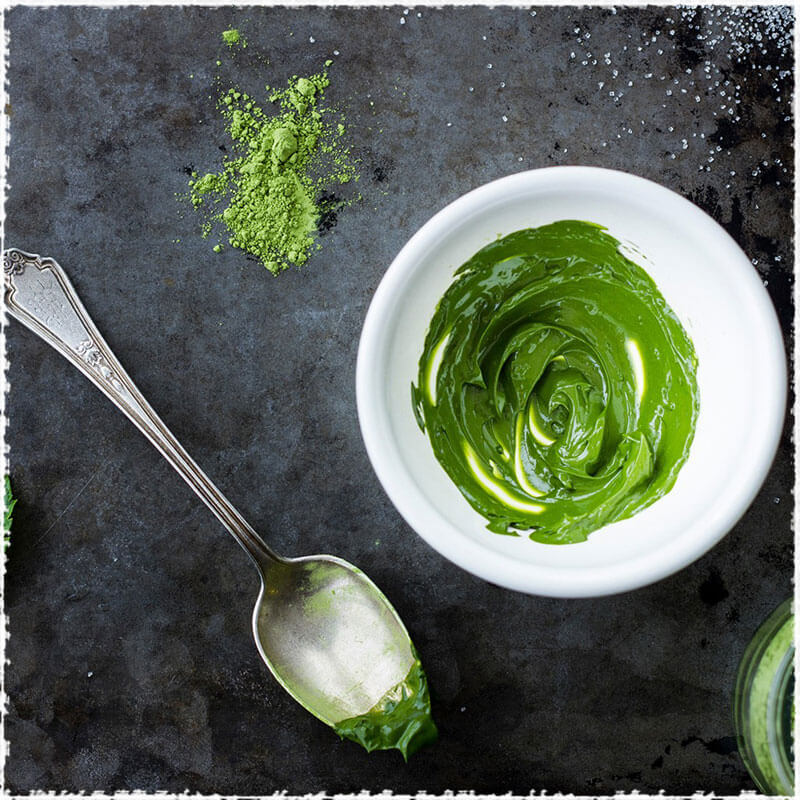
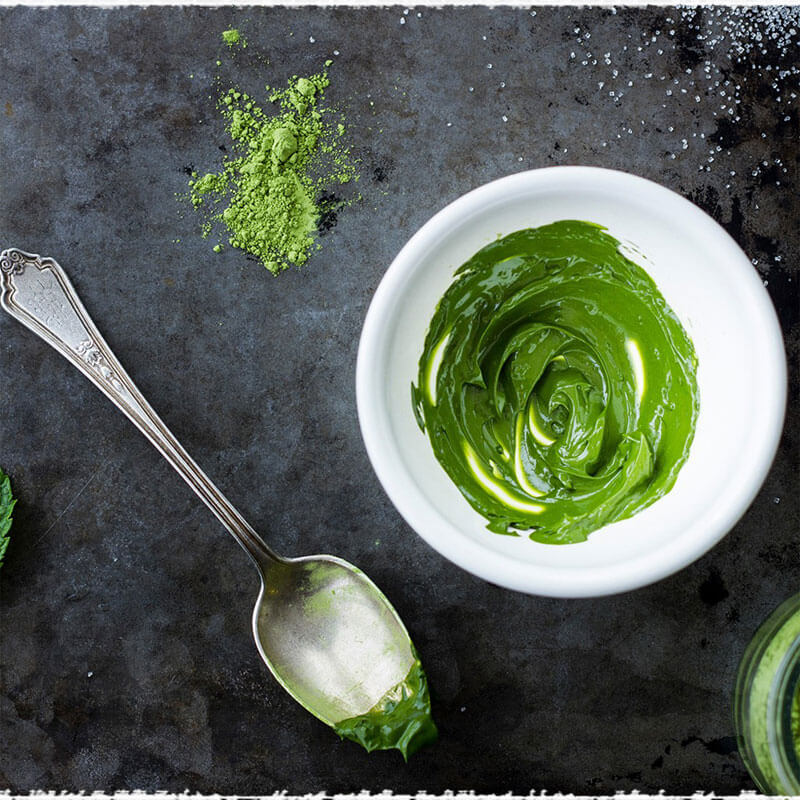
 Exploring the Charms of 2024 Spring Tea Garden with Angel
Exploring the Charms of 2024 Spring Tea Garden with Angel Yingde Black Tea
Yingde Black Tea Matcha vs. Green Tea Powder
Matcha vs. Green Tea Powder
